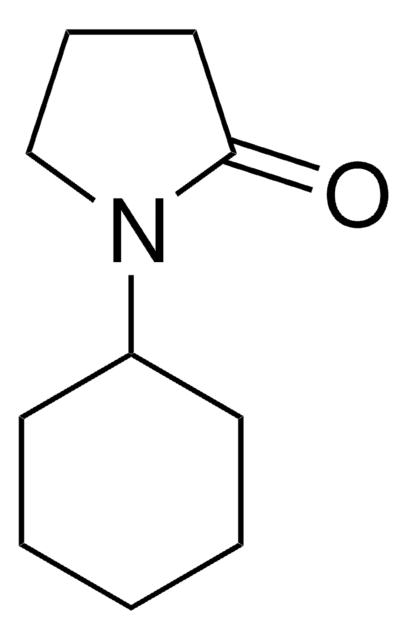700339
Titanium(IV) oxide, mixture of rutile and anatase
nanoparticles, <100 nm particle size, dispersion, 48-52 wt. % in xylene, 99.9% trace metals basis
Sinonimo/i:
Titanium dioxide
About This Item
Prodotti consigliati
Saggio
99.9% trace metals basis
Forma fisica
dispersion
nanoparticles
Concentrazione
48-52 wt. % in xylene
Dimensione particelle
<100 nm
~30 nm (primary particle size of starting nanopowder)
P. eboll.
>135 °C
Stringa SMILE
O=[Ti]=O
InChI
1S/2O.Ti
GWEVSGVZZGPLCZ-UHFFFAOYSA-N
Cerchi prodotti simili? Visita Guida al confronto tra prodotti
Descrizione generale
Avvertenze
Danger
Indicazioni di pericolo
Classi di pericolo
Aquatic Chronic 3 - Asp. Tox. 1 - Eye Dam. 1 - Flam. Liq. 3 - Skin Corr. 1B - STOT RE 2 Inhalation - STOT SE 3
Organi bersaglio
Central nervous system,Liver,Kidney, Respiratory system
Codice della classe di stoccaggio
3 - Flammable liquids
Classe di pericolosità dell'acqua (WGK)
WGK 3
Punto d’infiammabilità (°F)
80.6 °F
Punto d’infiammabilità (°C)
27 °C
Certificati d'analisi (COA)
Cerca il Certificati d'analisi (COA) digitando il numero di lotto/batch corrispondente. I numeri di lotto o di batch sono stampati sull'etichetta dei prodotti dopo la parola ‘Lotto’ o ‘Batch’.
Possiedi già questo prodotto?
I documenti relativi ai prodotti acquistati recentemente sono disponibili nell’Archivio dei documenti.
I clienti hanno visto anche
Articoli
Dye-sensitized solar cells directly convert sunlight to electricity
Over the last decade, dye-sensitized solar cells (DSSCs) have attracted much attention because these unconventional solar cells exhibit high performance and have the potential for low-cost production.
One of the more traditional photovoltaic devices, single crystalline silicon solar cells were invented more than 50 years ago, currently make up 94% of the market. Single crystalline silicon solar cells operate on the principle of p-n junctions formed by joining p-type and n-type semiconductors.
Titanium dioxide (TiO2) is an important n-type semiconducting material that shows interesting characteristics such as photoswitchable surface wettability, high photocatalytic activity, bistable electrical resistance states and high electron drift mobility.
Il team dei nostri ricercatori vanta grande esperienza in tutte le aree della ricerca quali Life Science, scienza dei materiali, sintesi chimica, cromatografia, discipline analitiche, ecc..
Contatta l'Assistenza Tecnica.




